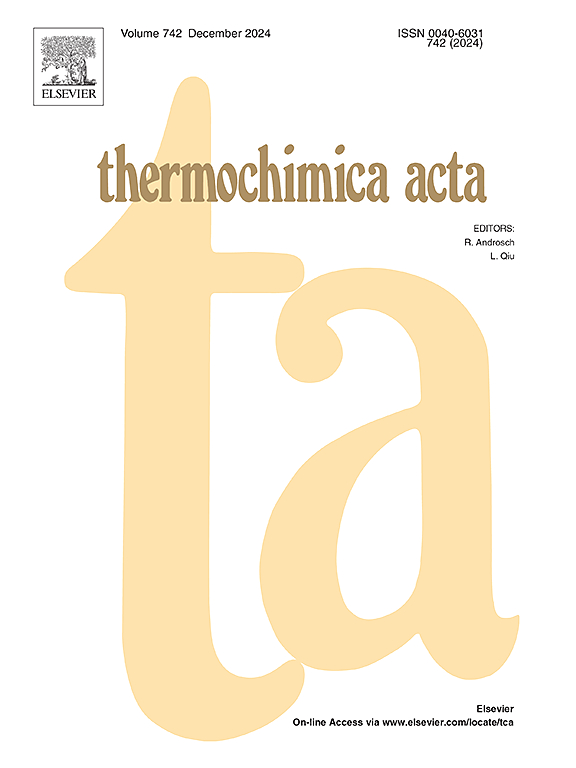三种杂质影响下过氧化苯甲酰热分解行为的研究
IF 3.1
2区 化学
Q2 CHEMISTRY, ANALYTICAL
引用次数: 0
摘要
本文主要介绍过氧化苯甲酰(BPO)的热安全问题。采用C80微量热计和TG-FTIR-MS/TG-MS联用仪,研究了其纯物质及其与H2O、H2SO4和NaOH混合后的热分解行为和机理。比较分析了不同杂质和加热速率对过氧化苯甲酰热力学参数的影响。结果发现,杂质的加入导致了平均活化能Ea形式(BPO)>;Ea形式(BPONaOH)>;Ea形式(BPOH2O)>;Ea形式(BPOH2SO4)。适量的水、酸、碱能促进BPO的热分解,过量则能抑制BPO的热分解。不同添加剂的加入会改变BPO热分解的机理本文章由计算机程序翻译,如有差异,请以英文原文为准。
Study on thermal decomposition behavior of benzoyl peroxide under the influence of three impurities
This article focuses on the thermal safety issues of benzoyl peroxide (BPO). Using C80 microcalorimeter and TG-FTIR-MS/TG-MS combination instrument, the thermal decomposition behavior and mechanism of its pure substance and mixed with H2O, H2SO4 and NaOH were studied. The influence of different impurities and heating rates on the thermodynamic parameters of benzoyl peroxide was compared and analyzed. It was found that the addition of impurities resulted in the average activation energy (BPO)> (BPO![]() NaOH)>(BPO
NaOH)>(BPO![]() H2O)> (BPO
H2O)> (BPO![]() H2SO4). Moderate amounts of water, acid, and base can promote the thermal decomposition of BPO, while excessive amounts can inhibit it. The mechanism of BPO thermal decomposition can be altered by the influence of different additives
H2SO4). Moderate amounts of water, acid, and base can promote the thermal decomposition of BPO, while excessive amounts can inhibit it. The mechanism of BPO thermal decomposition can be altered by the influence of different additives
求助全文
通过发布文献求助,成功后即可免费获取论文全文。
去求助
来源期刊

Thermochimica Acta
化学-分析化学
CiteScore
6.50
自引率
8.60%
发文量
210
审稿时长
40 days
期刊介绍:
Thermochimica Acta publishes original research contributions covering all aspects of thermoanalytical and calorimetric methods and their application to experimental chemistry, physics, biology and engineering. The journal aims to span the whole range from fundamental research to practical application.
The journal focuses on the research that advances physical and analytical science of thermal phenomena. Therefore, the manuscripts are expected to provide important insights into the thermal phenomena studied or to propose significant improvements of analytical or computational techniques employed in thermal studies. Manuscripts that report the results of routine thermal measurements are not suitable for publication in Thermochimica Acta.
The journal particularly welcomes papers from newly emerging areas as well as from the traditional strength areas:
- New and improved instrumentation and methods
- Thermal properties and behavior of materials
- Kinetics of thermally stimulated processes
 求助内容:
求助内容: 应助结果提醒方式:
应助结果提醒方式:


